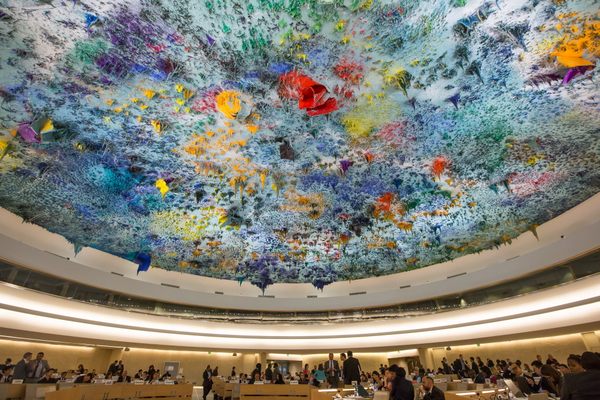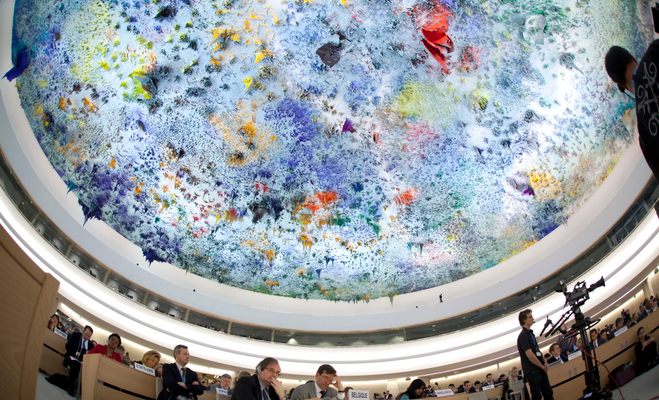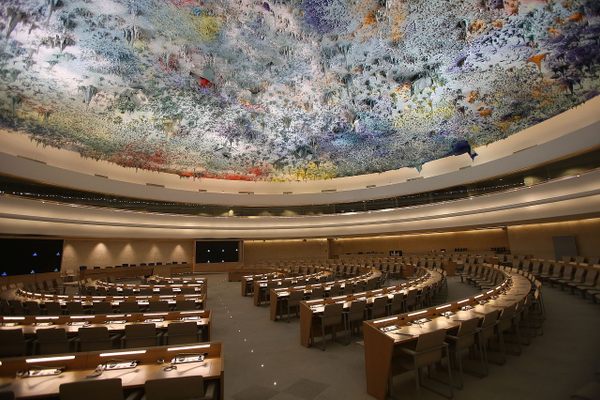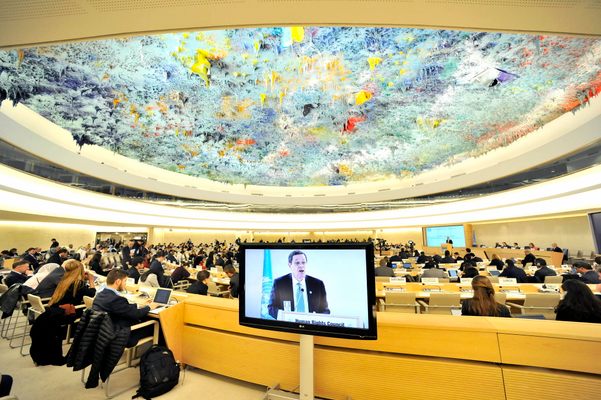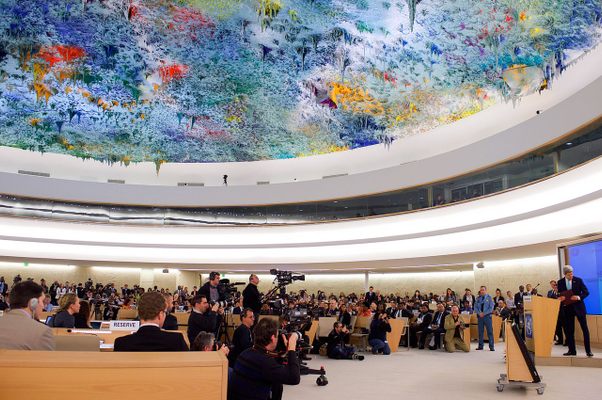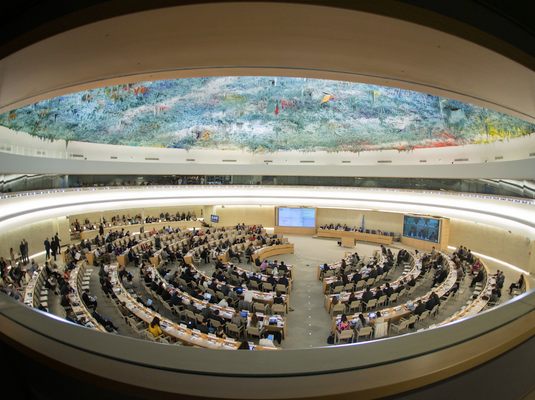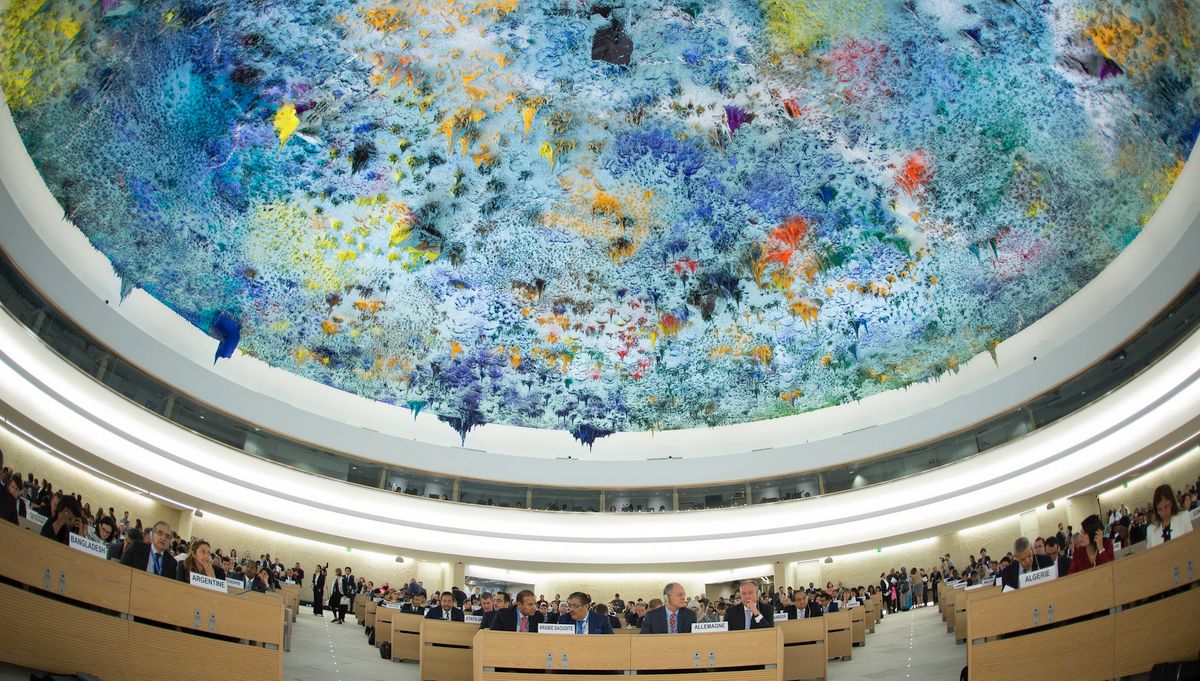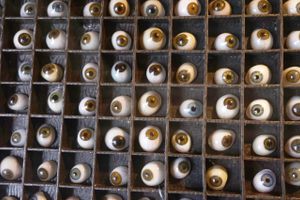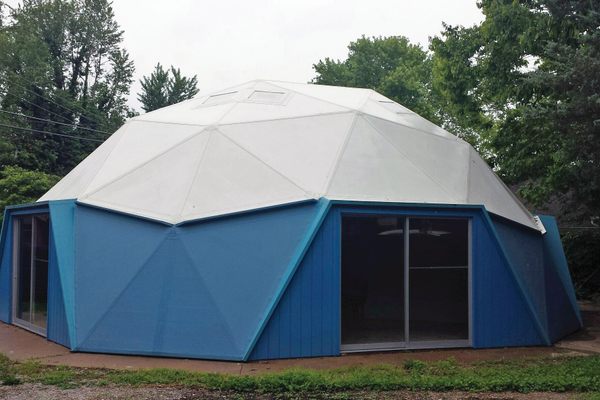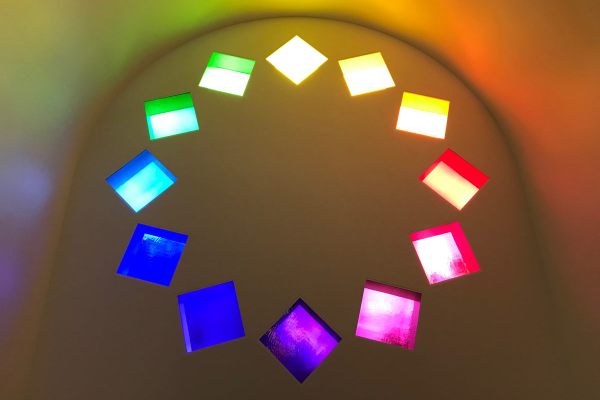About
On November 18, 2008, the United Nations inaugurated a refurbished meeting room at its European headquarters. The room’s ceiling instantly caught the attention of the global media. Some admired the artistic endeavor, calling the room a “21st-century Sistine Chapel.” Others decried the costly project, and criticized the manner in which it had been funded.
The Human Rights and Alliance of Civilizations Room, formerly known as Room XX, is one of the largest conference rooms in the Palace of Nations. Its redesign, carried out as part of a Spanish donation to the UN, took more than two years to complete. It was inaugurated by UN Secretary-General Ban Ki-moon and the King and Queen of Spain, with some 700 guests in attendance.
While some tech-minded attendees were undoubtedly focused on the state-of-the-art technology installed in the meeting room, most eyes were turned up toward the ceiling. Above them, the old dome had been changed into a sea of color, one which appeared to drip with stalactites of red and blue and yellow.
This was the work of Miquel Barceló, one of Spain’s leading contemporary artists. For two years, Barceló had worked to transform the 16,000-square-foot elliptical dome into something truly special. He and his 20 assistants—including a cook and a cave expert—used more than 100 tons of paint to decorate the ceiling, purposefully choosing pigments from all over the world.
And among the sea of bright colors hang the stalactites, which initially unnerved some of those standing below (while others joked that they might fall on the heads of their political rivals). To make sure no such calamity occurred, Barceló hung the resin stalactites, some of which are almost three feet long, from a specially-made aluminum honeycomb, making sure they could not fall.
Barceló’s inspiration for the ceiling came from a hot day in the Sahel region of Africa. In language that Hunter S. Thompson would have approved of, the artist explained the roots of his vision: “I remember with the vividness of a mirage the image of the world dripping toward the sky. Trees, dunes, donkeys, multicolored beings... trickling drop by drop. And being consumed.”
His work was generally seen as an artistic triumph, with many commentators calling the newly unveiled meeting room a modern Sistine Chapel. Controversy, however, was almost sure to follow, especially in such a hotbed of political discourse.
The project had cost around 20 million euros ($25.25 million), with the bulk of the money coming from the ONUART Foundation, a Spanish non-profit, public-private partnership established by the Spanish Ministry of Foreign Affairs. Of the public money, 500,000 euros ($633,000) came from a budget for overseas development aid and international organizations (like the United Nations).
Unsurprisingly, critics argued that this money could have been spent alleviating poverty and improving health care in poorer countries. The debate raged on, with various claims and counterarguments coming from both sides. Javier Garrigues, Spain's ambassador to the UN, argued that the project was justified considering its location: "Funding the human rights headquarters clearly falls into the category of development aid," he said.
As for Miquel Barceló, he responded to the controversy in a level-headed and sober manner, ditching his more trippy rhetoric to explain how the whole episode had taught him “to be careful in dealings with the political class and to spend more time in my workshop.”
Related Tags
Know Before You Go
The Human Rights and Alliance of Civilizations Room (home of Miquel Barceló’s ceiling) is located in the Palace of Nations (Palais des Nations) in Geneva, Switzerland. Tours of the palace, which include the Human Rights and Alliance of Civilizations Room, take place most days. Visitors must enter through the Pregny Gate of the palace at 14, avenue de la Paix. You can check the latest schedule and entrance fees at the UNOG website.
Published
October 8, 2019
Sources
- https://www.reuters.com/article/us-art-ceiling/new-u-n-art-work-raises-controversy-idUSTRE4AH95M20081119
- https://ohchr.org/EN/NewsEvents/Pages/ArtForHumanRights.aspx
- https://www.swissinfo.ch/eng/barcel%C3%B3-unveils-un--sistine-chapel--in-geneva/7046352
- http://www.nbcnews.com/id/27788857/ns/world_news-united_nations/t/un-unveils-its-million-ceiling-art/#.XZTAEn9OnIV
